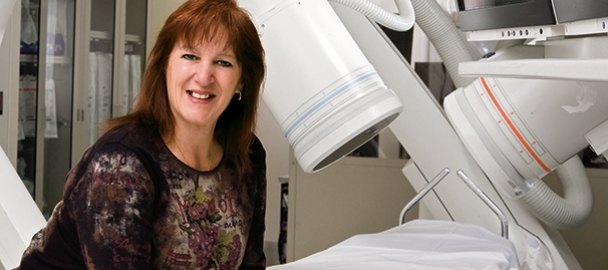
A heart attack was the last thing on Karen Heydorf’s mind—but self-diagnosed panic attacks were a major concern. During the initial episodes, which occurred two or three times a day, the 52-year-old Long Beach resident experienced “little chest pains” accompanied by a tightening sensation in her throat. “I was sure the cause was stress,” says Karen. During the next week, the number of incidents increased—and the chest and neck discomfort became more intense.
“One evening, the pain was so severe that my sister wanted to call 9-1-1,” recalls Karen. “I told her it was a ridiculous idea. All I had to do was calm down and I’d be fine.” After walking around her sister’s home for several minutes with one hand clutched to her chest, the other to her throat, the pain eventually went away.
But a few days later, it returned with a vengeance. After starting the day pain-free and experiencing several hours of escalating chest discomfort in the evening, Karen suffered a life-threatening heart attack. As waves of nausea engulfed her, she crawled into bed and summoned her roommate for help. “The chest pain was so severe, I couldn’t move,” says the mother of two adult children.
Within minutes, paramedics arrived. They were equipped with a new type of electrocardiogram (EKG) machine so advanced that it could identify the kind of heart attack Karen was suffering. “It involved a clot that had blocked a critical artery supplying blood to the heart,” says Rex Winters, M.D., director of interventional cardiology at Long Beach Medical Center. “The preferred treatment for this condition is balloon angioplasty with coronary stent implantation, but timing is critical.” To ensure the best outcome, the procedure should be performed within 90 minutes of the patient’s arrival at the hospital.
Long Beach Medical Center is staffed and equipped to perform these procedures within this time frame—night or day. “The ability to meet the 90-minute door-to-balloon standard is considered one of the most important tangible measures of quality care for heart attack patients nationwide,” says Dr. Winters. “It improves survival rates and helps prevent long-term damage to the heart muscle.”
By the time Karen was rushed through the doors of the Long Beach Medical Center emergency department, Henry Van Gieson, M.D., and the angiography team were awaiting her arrival. Composed of a cardiologist, nurse specialists and technologists, the team diagnosed, medicated and prepped Karen without a moment’s delay. A balloon-tipped catheter was inserted through a tiny incision in her groin and guided to the site of the problem using X-ray visualization. Then the blocked artery was cleared of the obstruction and a stent was inserted to keep the blood vessel open permanently.
Following the procedure, Karen was monitored at the Memorial Heart and Vascular Institute. “I felt wonderful,” she says. “The incision was so small, it was as if nothing had happened.” Only 25 percent of the hospitals nationwide are capable of meeting the 90-minute door-to-balloon standard, and fortunately for Karen Long Beach Medical Center is one of those hospitals.